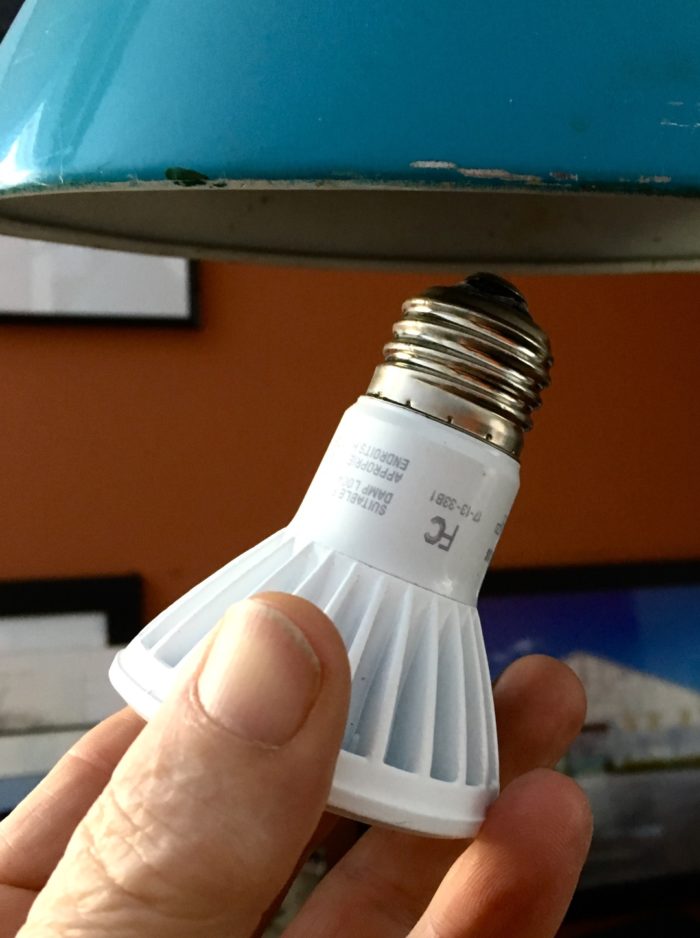
One of the least energy-efficient products in modern history, the incandescent light bulb — a type of bulb that dates back to the days of Thomas Edison — is being permanently retired in California as of January 1, 2018, and in 2020 for the rest of the nation. California is demonstrating its environmental leadership once again by being the first state in the nation to move forward with improved energy efficiency standards for the everyday screw-based light bulb.
With around 250 million sockets in California that still contain inefficient bulbs, the savings really add up. Once all of these sockets switch over to a more efficient alternative — CFL or LED light bulbs — California consumers and businesses will save an estimated $1 billion every year on their electric bills.
The new standards are part of a gradual transition away from the old incandescent bulbs, which had remained essentially the same since Edison created the first commercially available bulb in 1879, to today’s lighting technology. Manufacturers and retailers have known about the changes for more than 10 years and responded to the challenge by offering a complete suite of new energy-saving light bulbs that meet the new standards.
How do the standards work?
The California standards cover the common light bulbs we use in our homes. The regulation requires bulbs manufactured on or after January 1, 2018, and offered for sale in the state to achieve a minimum efficiency level of 45 lumens per watt, which is three times more efficient than the old incandescent bulbs. (Note: Lumens measure the amount of light a bulb produces and watts measure the amount of power it consumes.)
Given that no incandescent or halogen bulb on the market comes close to meeting these levels, consumers will be choosing between energy-saving compact fluorescent (CFL) and LED light bulbs. LED bulbs deliver superior performance relative to CFLs, so they are likely to be the bulb of choice going forward.
In California, retailers are allowed to sell through their inventories of inefficient light bulbs manufactured prior to January 1, 2018. For more details on the standard, including information on which bulbs are covered and which are exempt, see this fact sheet.
LEDs do everything except waste a lot of energy
Today’s LED light bulb is an amazing product. It is just as bright as the incandescent and halogen bulbs it was designed to replace, gives off the same quality of light, turns on instantly, and uses 80% less energy. Most models are also dimmable. The LED bulb that replaces the 60-watt incandescent bulb only uses 10 watts of power to deliver the same amount of light. LED bulbs also last 15 to 25 years, based on typical daily operation of three hours per day, which eliminates the hassle of having to replace an incandescent bulb every year or so.
In addition to being much better for the environment (less electricity use translates to fewer power plant emissions and cleaner air), LEDs are a great deal for consumers. While LED bulbs once cost around $20, you can now buy one for $2 to $3 per bulb when purchased in a multi-pack. With their much greater efficiency, LED bulbs will save consumers around $50 to $150 over the bulb’s lifetime, with the brightest models delivering the biggest savings.
LED bulbs come in all shapes and brightness levels
The lighting manufacturers and retailers have done a wonderful job developing and promoting LED bulbs. Any visitor to a Home Depot, Walmart, Lowe’s, Costco, or Target store is presented with a wide display of energy-saving LED light bulbs. In fact, LEDs now dominate the lighting aisle and occupy a lot more shelf space than incandescents and halogens.
You can find LED bulbs from not only the big three lighting companies — Philips, GE and Osram — but also new manufacturers such as Cree, Feit, and TCP.
Replacements for the old 40-, 60-, 75- and 100-watt bulbs are all widely available. While they are not currently covered by the new California regulation, LED replacements are also available for the old candelabra lamps commonly used in chandeliers and sconces, three-way lamps, and large-diameter reflector/flood bulbs.
How do you know which LED bulb to buy?
Rather than buying a bulb based on wattage, consumers should be looking for one that gives off the same amount of light as their old bulb. As few consumers know that their old 60-watt incandescent gave off 800 lumens, manufacturers include equivalency claims on their packages such as “10 W = 60 W” or “60 W bulb replacement.” The table below compares the power and light output of common incandescents and their LED replacements.

Some other quick consumer tips:
- Bring your old bulb to the store so you can select a replacement with a similar size and base type.
- Buy a dimmable model if that’s what you are currently using.
- LED bulbs offer different “colors” of light. LEDs that mimic conventional incandescent bulbs are marketed as soft white or warm white and produce a yellowish white light. LEDs that give off a more bluish white light are referred to as cool and are sometime marketed under the name “daylight” or an equivalent term. While most consumers prefer the warm white look because it’s most similar to the old incandescent, others may prefer the cool white bulbs. If you are unsure which you prefer, try one of each before retrofitting your whole home.
- Buy bulbs with the Energy Star logo. They have been subjected to rigorous testing and must meet numerous stringent requirements set by the U.S. Environmental Protection Agency regarding long-term performance, dimmability, light distribution, etc.
For more information on how to buy an LED bulb, go to the guides prepared by NRDC, the California Lighting Technology Center and the EPA.
Noah Horowitz is senior scientist and director of the Center for Energy Efficiency Standards, Energy & Transportation Program at the National Resources Defense Council. This blog was originally posted at the NRDC’s Expert Blog.
Weekly Newsletter
Get building science and energy efficiency advice, plus special offers, in your inbox.





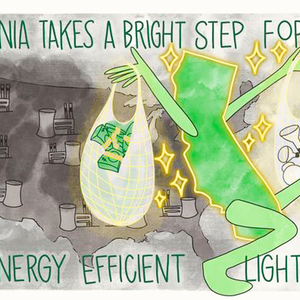
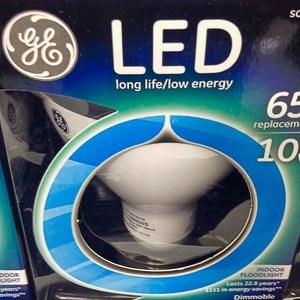
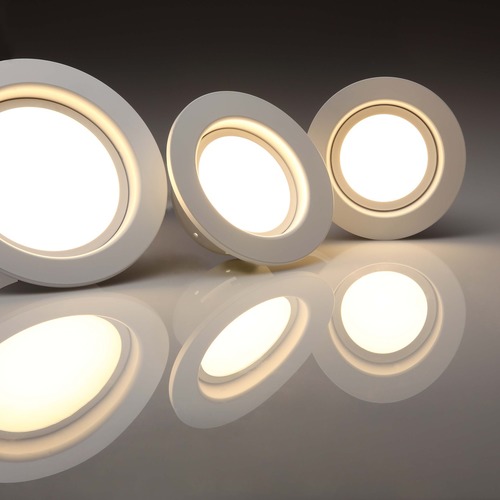
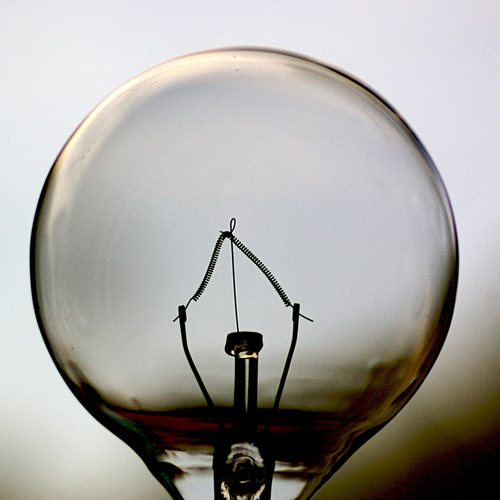






25 Comments
A bit of fact checking
I believe the incandescent was banned as of 2014 so any still in use would be old stock which can't be replenished. In Canada anyways, but i thought the US had a similar law.
LED bulbs are still only 30-40% efficient so technically they do waste lots of energy, that said they obliterate the 4.5-7% efficiency of incandescent
Most CFL/LED produce 80CRI vs the 100CRI of incandescent, high CRI (92 typ) costs a fair bit extra and is only available in some form factors.
Most 40Weq LEDs are 7-8W not 5W (though you could probably find a 5W version). Also 100W eq LEDs usually cost more then double the 60Weq
Finally energy star reduced the lifetime requirements for certification from 25000 to 15000, all are based on statistical analysis, not actual 15/25k hour testing, and in theory the bulb should still be working at the end of its life, it will have just lost luminosity, though many fail prematurely due to electronic component failure, especially if used in enclosed fixtures which most LED bulbs are not rated for.
Alan B
That was my understanding too, but I still see a fair selection of incandescents on the shelves at my local Home Hardware.
CRI
Most of the cheaper LED bulbs have poor light quality that's nowhere near what incandescent bulbs produce. Many of them simply look terrible, and only ignorant consumers that don't know better would accept them. Sadly, this seems to be the majority of people (based on my observations).
CRI and color temperature are currently the only ways to establish a light "quality" metric. New standards are coming, but who knows how long that will take and then how long it will take for the industry to fully adopt them. Until that time, substandard lighting will (unfortunately) be the norm.
Don't get me wrong, I love LED lighting and have almost every bulb in my house converted. Only a few specialty incandescent bulbs remain. But I'm a fussy customer who's not afraid to return a product that doesn't meet my requirements. I've had many compliments about the lighting in our home, and unless I bother elaborating, no-one would realize the effort it took to get there.
Blanket claims like LED "gives off the same quality of light" as incandescent are completely wrong and misleading. Nice looking and decent quality LED lighting IS definitely available, but that doesn't mean every discount off-brand LED bulb offers good lighting. Most don't. Unfortunately, even the large well known lighting brands make some poor quality LED lights, so even sticking to a brand isn't a guarantee of quality.
Incandescents were never outright banned in the US
The national efficiency requirements got upgraded to where halogens and some better grade incandescents could still make it:
https://www.energystar.gov/ia/products/lighting/cfls/downloads/EISA_Backgrounder_FINAL_4-11_EPA.pdf
LEDs and their CRI
There is no such thing as a "white" LED. All raw LEDs emit light in a narrow spectral range. They look red, blue, green or whatever. A white LED is actually a florescent lamp. A florescent uses a high energy light source (blue to ultraviolet) who's photons are absorbed by the atoms of a florescent substance that reemits photons of lower energy (red, yellow, green etc.) The substances are called phosphors. Manufacturers use mix of phosphors of various colors to create white light. A standard florescent lamp passes an electric current through a gas thus creating a plasma that emits ultraviolet energy. This is absorbed by phosphors that coat the inside of the tube. The high energy of ultraviolet light allows designers a to employ a wide variety of phosphors that have different colors and costs. Some high CRI (color rendering index) florescent lamps employ 7 different phosphors. Some cheap lamps use 2. LED designers are in a bind. They use much lower energy blue LEDs to excite their phosphors, so they have fewer to work with. Also, a significant amount of the blue light gets through. Early white LEDs had an objectionable blue cast. Designers began to add a yellow filter to warm up the light. This adds an efficiency penalty. The warmer the light the less efficient it is. The average white LED has a CRI of around 80, but some reach 90 (incandescents are 100). Read the label. Don't buy unless the CRI is listed. A Chinese company, Yuli, uses higher energy purple LEDs to achieve a CRI of 98.
I pulled all the LEDs in my house
Caught up in the whirlwind of energy efficient building I made the mistake of installing all LEDs a couple years ago in our new home. I found the light to be harsh and sharp, not comforting and cozy. LED also emit lots of blue light so any one with sleep issues should be weary of installing these lights in areas of the home they inhabit during evening hours.
I have since removed most of the LEDs in our home and replaced with good old incandenscents. Much better living environment.
LEDs are also poor for your health. Terrific article below.
https://articles.mercola.com/sites/articles/archive/2016/10/23/near-infrared-led-lighting.aspx
LED Protection
My tin foil hat protects me from the dangerous emissions of my LEDs.
Tin foil hat indeed
Led bulbs typically produce less blue light at 480nm which is the eye's blue light sensitivity, so no need to indulge lies in pursuit of quackery. Of course anyone who believes won't accept this and will start arguing using falsified data. I find it fascinating how much people dislike new technology, soon i expect to hear how electric cars are bad for us and gasoline is the only acceptable technology.
Incandescent is familiar so accepted but the interesting thing about LEDs is they have so many more options which is both good and bad, with incandescent you have 2700K, 100CRI and flexibility, you want a bulb you buy the wattage you want and your good to go. This is because the technology is simple and we have spent a century designing around it.
With LED you can get any colour temperature from <2000K users.
@Kye,
A lot of devices emit "blue light" other than just LED bulbs. It's just a matter of choosing the correct bulb. After all you wouldn't want to light your house with backlights no would you?
Oh and a FYI..Mercola is notoriously inconsistent and omits context so take what they say with a grain of salt.
LEDS are great!
My house is 100% LED lighting and I guarantee you that one would think they are incandescent lights because the lighting is so soft and warm. It all comes down to buying the correct quality LED and making sure to check the temperature of the light is correct. In the garage I have a brighter clean white LED lighting but in the home it's a softer warmer color. Identical to what an old school incandescent bulb would look like.
I am sold on LEDS and being a 100% LED home, I would NEVER go back to incandescent or CFL.
CRI is Limited and Outdated
Anyone pointing at CRI clearly isn't a lighting expert. In the lighting industry CRI shortcomings have been known for decades. CRI measurement only uses 8 colors. If you're working in film or any other application where accurate lighting is critical, CRI isn't the best way to determine a lighting system's performance. CRI is being replaced because there are far better measurements like TM-30:
https://blog.1000bulbs.com/home/tm-30-15-cri
Furthermore incandescent and fluorescent backlighting is history in displays too, the most accurate high resolution HDR displays and TVs have moved on to more accurate and precise backlights like LED.
JM
At the risk of being sexist, my experience is most men can only name and distinguish between about eight colours.
Mercola?
Kye, would you happen to have a reputable source for such claims. Mercola . . . is not. Anti-vaccine, anti-GMO, constantly wrong on science facts and very biased. "Alternative" medicine at it's worst.
Not all incandescents are CRI 100 @ Alan B
Incandesents with clear or frosted glass hit CRI 100 (but at quite a range of color temperatures- a 100 watt halogen is a lot bluer than a 40 watt cheapie, with a much higher color temperature.) But many incandescents have phosphors on the inside of the glass to pump some of the IR and UV coming off the filament into the visible spectrum to increase efficiency, at the cost of a reduced CRI. Unlike LEDs and CFLs, the CRI of incandescent bulbs are rarely listed, or even tested. Many lower wattage incandescents with no phosphors run about CRI 90-95, due to very low emission at the blue end of the visible spectrum.
Early LED illumination (and many of the cheapest versions today) used only blue LEDs with added phosphors (not filters) to lower the color temperature. The phophors are chosen to convert some of the blue energy to longer wavelength visible emissions, but the blues still dominate. Contrary to thrifttrust's statement, "All raw LEDs emit light in a narrow spectral range." the emission spectra of LEDs are fairly "smeary", covering a reasonably broad chunk of visible spectrum around the central peak. The are nothing like the extremely narrow emissions spikes of gas-arc technologies such as fluorescent tubes. As efficiency gains have been made on LED types of various colors other than just blue, newer/better LED assemblies use multiple LED colors with overlapping color spectra, and only minimal use of phosphors. The blue LED was still a major breakthrough in making it useful for general lighting purpose, since even (fairly mature technology) green LEDs emit very little in the blue end of the visible spectrum, and the amber & red LEDs emit essentially none. With the addition of blue LEDs it's possible to cover pretty much the entire visible spectrum.
Most fluorescents have only the three main visible spectrum (and extremely narrow) spikes emitted by argon-mercury arc to work with, and use phosphors to convert some of the emission lines outside of the visible spectrum into visible light. It's fairly easy to get to CRIs north of 80 with just one or two cheap phosphors, and for general illumination that's fine. With more exotic and multiple phosphors it's possible to hit the mid-90s with fluorescent technology, albeit at a lower luminous efficiency.
Making LEDs dimmable over a wide range of output using the same cheap thyristor dimmers used for incandescents for the past 50 year is fairly simple and cheap compared to what it takes with fluorescent lighting. Dimmable edison base LEDs are pretty good in general, and VASTLY better than semi-dimmable CFL and cold-cathode edison base units. Linear fluorescents using purpose made ballasts & compatible dimmers have a pretty good range though, but the specialized dimmers & ballasts are pretty expensive, some even require extra control wiring. Dimmable fluorescent and LED techologies don't change color temperature with luminous output the way incandescents do, and at lower light levels can look a bit gray compared to the
"warmer" orangey-red glow of dimmed down incandescents. If eye-fatigue red "mood lighting" is what you're looking for, there are dimmable edison base LEDs out there in the 2000-2200K range to meet that market.
At this point the only incandescent bulbs in regular operation at my house are in the oven (where the tolerance for higher temperatures is plus), the refrigerator, and the clothes dryer. I've swapped out some still functional CFL and cold-cathode downligting in favor of LEDs where PAR optics were more useful in those fixtures than the typical CFL or LED flood. (CFL PAR lamps were never really very good.)
@ Dana
Point taken, i should have mentioned i was referring to the most common bulbs, the 40W/60W/100W E26 base bulb
Dimming LEDs
Dana Philips makes dimming LED bulbs that shift to lower color temperature that have been available for a few years now at big box stores. They start at 2700K and dim down to around 2200K. Efficient and they perform well. Newest version: https://www.usa.philips.com/c-p/046677469733/led-bulb
A19 Most Common
A19 is the most common bulb but Warm Glow dimming is available in various common bases and shapes and up to 1600 lumen (100W).
That's good to know @ J M
The warm-glow dimming is something I personally don't care about, but some people do. It's good to know that they've engineered a product to meet that market! Thanks!
@J Clark , Nathan Spregal... Mercola Inconsistent?...
Not sure what you mean by inconsistent or not fact based. Every article he publishes is footnoted and referenced. If you want to keep drinking the Kool-aid and keep your head in the sand that is your business.
Really...there are people out there still willing to defend GMO crops. Wow. Last time I checked Round Up has been definitively linked to cause cancer. If you think Mercola is suck a quack than go out and drink a bottle of Round Up. Cheers!
An unproven thesis, but with easy fixes (if found to be true.)
Red LEDs emit a small amount in the near infrared, but there are also high efficiency near-infrared LEDs out there used for every thing from TV remote controls to security cameras. IF a large cohort double blind study shows there is an actual rather than theoretical risk, establishing a dose-response and crafting regulations requiring a specified fraction of the output of an LED assembly be in the relevant piece of spectrum.
Large numbers of people have spent 8 or more hours per day under fluorescent lighting for decades, with very minimal near-infrared emissions too. If it's a real hazard, it shouldn't be tough to measure.
Of course simply spending time outdoors on sunny days mitigates all sorts issues related to insufficient exposure to natural lighting.
Note that Mercola himself has not switched out all his LEDs for incandescents.
https://articles.mercola.com/sites/articles/archive/2016/10/23/near-infrared-led-lighting.aspx (half way down under the heading "Healthier Solutions" it reads:
"Personally, I've not swapped all my lights back to incandescent because they're such energy hogs."
His "solution" of keeping some halogens around isn't nearly as healthy as just spending some time outside during the day.
@Kye Ford
Years ago I found numerous contradictions with them and due to a lack of a response regarding those contradictions/lack of context I just wrote them off. They're just cashing in on the fashionable idea of being anti-"fill in the blank".
Quality not Quantity
I see lots of LED's out there at 80ish lumens per watt, kind of miserable.
Price has become a driving factor and quality is suffering. In pursuit of looking like an incandescent, many new design don't have proper heat sinks, and can fail spectacularly. How many homes burned down from a cheap LED light, does it take to spoil an entire China shipping container of energy savings?
See also https://www.reminetwork.com/articles/14195/
And https://www.youtube.com/watch?v=94Pemtc3Uhw
I think the EPA needs to institute a real world testing program, along with standardizd bar code on LED bulbs, allowing a consumer to check (and GET) a warranty on a bulb with no hassle.
The Big Lie about LED Effeciency
See also the comments at http://www.eenewsanalog.com/news/big-lie-about-led-lighting/page/0/1
The EPA, without a quality control program, is perpetuating e-Waste and overestimating the life cycle savings of LED lighting.
Bryce
I can't see any links between your complaints about LED quality and fire risk. Have you seen reports of house fires caused by LED bulbs?
Response to Bryce Nesbitt
Bryce,
I'm not sure what your point is, except to send us to an article with an anecdote about a homeowner who bought an (unidentified) brand of LEDs with a high failure rate.
I would echo Noah Horowitz's advice in his article: "Buy bulbs with the Energy Star logo. They have been subjected to rigorous testing and must meet numerous stringent requirements set by the U.S. Environmental Protection Agency regarding long-term performance, dimmability, light distribution, etc."
Log in or create an account to post a comment.
Sign up Log in